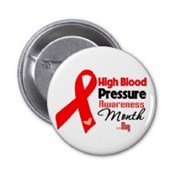You can take steps to prevent high blood pressure by adopting a healthy lifestyle. These steps include maintaining a healthy weight; being physically active; following a healthy eating plan, that emphasizes fruits, vegetables, and low-fat dairy foods; choosing and preparing foods with less salt and sodium; and, if you drink alcoholic beverages, drinking in moderation. In this section you will learn more about healthy lifestyle habits for preventing and controlling high blood pressure.
Research has shown that following a healthy eating plan can both reduce the risk of developing high blood pressure and lower an already elevated blood pressure.
For an overall eating plan, consider the DASH eating plan. "DASH" stands for "Dietary Approaches to Stop Hypertension," a clinical study that tested the effects of nutrients in food on blood pressure. Study results indicated that elevated blood pressures were reduced by an eating plan that emphasizes fruits, vegetables, and low-fat dairy foods and is low in saturated fat, total fat, and cholesterol. The DASH eating plan includes whole grains, poultry, fish, and nuts and has reduced amounts of fats, red meats, sweets, and sugared beverages.
A second clinical study, called "DASH-Sodium," looked at the effect of a reduced dietary sodium intake on blood pressure as people followed either the DASH eating plan or a typical American diet. Results showed that reducing dietary sodium lowered blood pressure for both the DASH eating plan and the typical American diet. The biggest blood pressure-lowering benefits were for those eating the DASH eating plan at the lowest sodium level (1,500 milligrams per day).
The DASH-Sodium study shows the importance of lowering sodium intake whatever your diet. But for a true winning combination, follow the DASH eating plan and lower your intake of salt and sodium.
You can download a copy of Your Guide to Lowering Your Blood Pressure with DASH at http://www.nhlbi.nih.gov/health/public/heart/hbp/dash/index.htm







